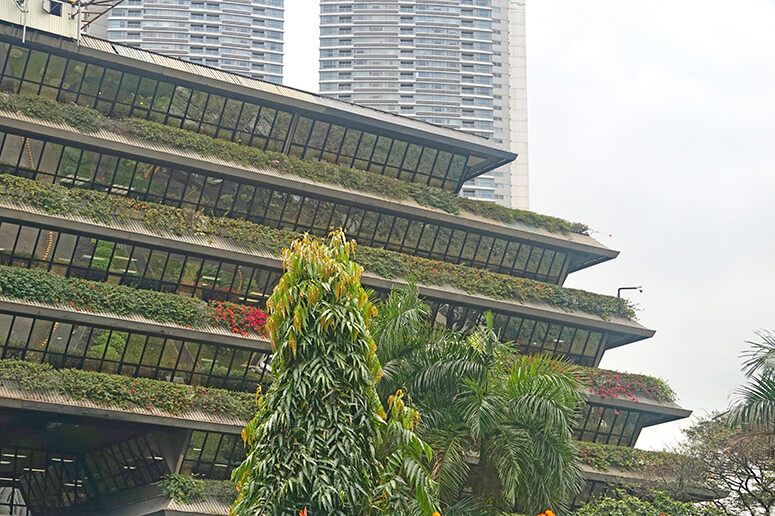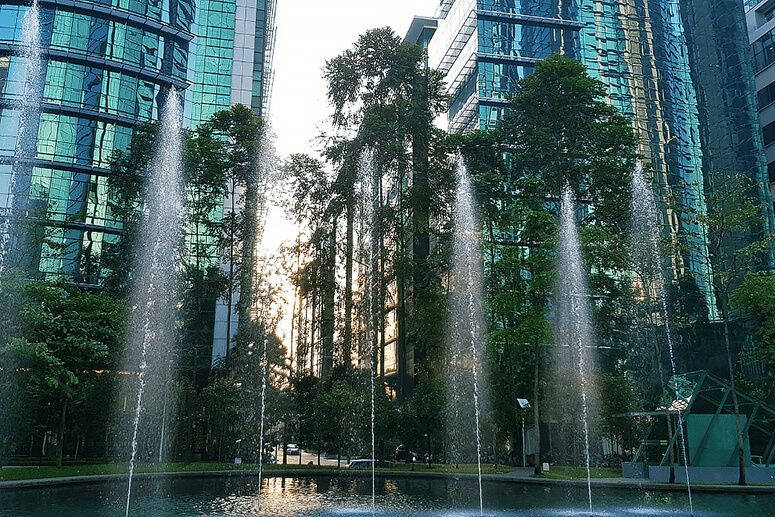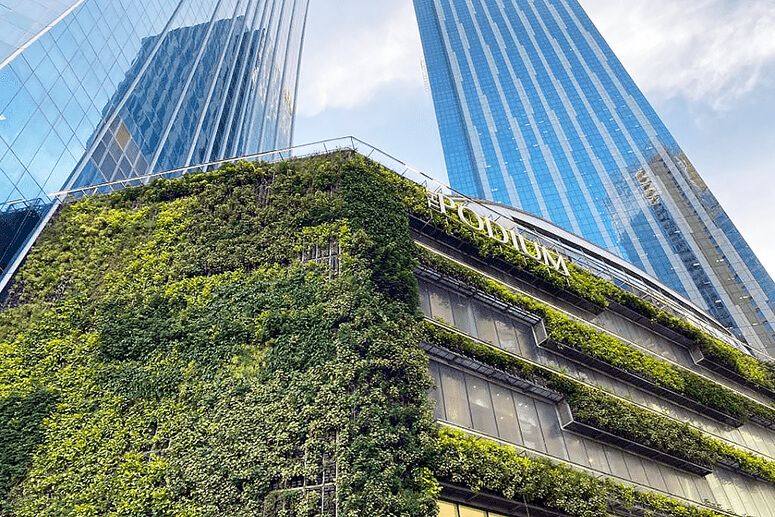Green buildings have become a common thing in office markets around the world especially the years following the pandemic amid the focus on sustainability and healthier spaces. While a lot of the attention has been placed on how green buildings can reduce the consumption of resources, which may lead to lower operations costs for buildings, there are more benefits that these structures may offer brought by lush greeneries.
“The campaign for sustainable development prioritizes green strategies that enhance an office building’s performance by reducing its consumption of resources. This overshadows the benefits of one of the most basic green practices even one can do in their own backyard: planting,” Colliers Manager for Office Services- Landlord Representation Ronald Cadapan said in a recent viewpoint.
“Having trees and shrubs provides shade, improves aesthetics, and, most importantly, increases oxygen supply in its surrounding environment, which is fundamental to improving air quality,” Cadapan added.
Cadapan, however, lamented that planting greeneries is still not a mandatory requirement in today’s built environment even when it remains to be one of the simplest solutions to mitigate the effect of climate change.
“Most, if not all, green building programs and codes have required projects to dedicate areas for vegetation; however, this is only mandated in certain localities and may even be poorly implemented or maintained,” he added.
Urban gardening
While urban gardens especially with areas for vegetation are not a mandatory thing in the country, the government has encouraged the setting up of urban farms.
During the recent Philippine Horticulture and Urban Agriculture Summit 2024 in May, Agriculture Secretary Francisco Tiu Laurel, Jr. recognized urban agriculture as a modern adaptation of traditional practices by bringing agriculture to city centers and communities.
“It presents a unique opportunity to reimagine the role of urban spaces in our agricultural system and harness the capacity of idle lands into centers of food and land production,” Tiu Laurel said.

Quezon City is one LGU that has taken notice of the potential of urban agriculture as it has significantly grown its number of urban farms to 1,026 last year, compared to the 754 urban farms in the first half of the same year through its “Joy of Urban Farming” initiative.
According to earlier news reports, the QC LGU said its urban farming program started with a 750-square-meter area at the Quezon Memorial Circle in 2010 and has now expanded to all of the city’s 142 barangays.
The private sector is also boosting its efforts in the urban farming space. One notable urban farm project in Metro Manila is San Miguel Corp.’s Backyard Bukid located in its headquarters in Mandaluyong City. The project, which was initiated in 2021 to assist its service personnel during the pandemic, now includes a plant nursery, 80 garden plots, and also functions as a center for employee wellness, volunteerism, and training.
In January, SMC said the project has been replicated in several SMC facilities by the San Miguel Foundation, adding that the project has been expanded through a partnership with Urban Farmers PH, enhancing the farm’s diversity and variety of produce.
Similarly, Urban Farmers PH is also responsible for another popular urban farm in Metro Manila particularly, the BGC Community Farm in Taguig City. According to the group, the land was lent by the Ayala group’s Fort Bonifacio Development Corp. for the project which began in 2022.
Plants within buildings
Cadapan noted that oftentimes, vegetated spaces come in last in the design of office buildings when utilizing small areas as pocket gardens or plant boxes for viewing decks or outdoor seating.
“While this contributes to complying with green building codes, this can be elevated by providing adequate space as recreational areas for various wellness activities. Such amenity would allow occupants and even visitors to participate in routine or occasional health programs, whether it be dancing, meditating, or exercising, to which plants can improve visual focus, air supply, and even acoustics, muffling the noise of traffic and others,” he added.

Although flowering plants are desired for their pleasing aesthetics, Cadapan acknowledged that it will be hard to keep a lot in a tower of glass and concrete due to their high maintenance and water demand.
He recommended office landlords to consider a combination of both flowering and nonflowering plants that can be supplied with a non-potable water source, such as recycled greywater from collecting rainwater or using an onsite water treatment system.
“Maximum efficiency can even be ensured by adopting drip irrigation and/or automatic watering system that uses sensors to detect moisture content in soil. In some other countries, xeriscaping is being employed to eliminate the need for irrigation at the expense of plant species options,” he added.
Vertical gardens in office buildings
The Colliers official emphasized that there are different ways to increase the surface area of vegetated spaces and they are not always laid flat unto the ground.

“They can instantly turn your building into a landmark just as in the case of several developments in other countries, including Sydney’s Central Park in Australia and Milan’s Bosco Verticale in Italy,” he added.
In the Philippines, Cadapan cited the Makati Commerce Tower as one building that attempts to be creative and functional by using a layered greenwall across the façade to cover its podium floors.
“This helps in improving air quality across these levels that house the indoor car park which are exposed to carbon monoxide,” he added.
Other office buildings with vertical gardens include the Podium West Tower in Ortigas Center, which features a 2,000 sqm vertical garden facade, as well the NEX Tower along Ayala Avenue in Makati City.
As the interest for both green building and urban farming continues to grow in the country, integrating these two concepts is something that office landlords should consider given its benefits to tenants.
